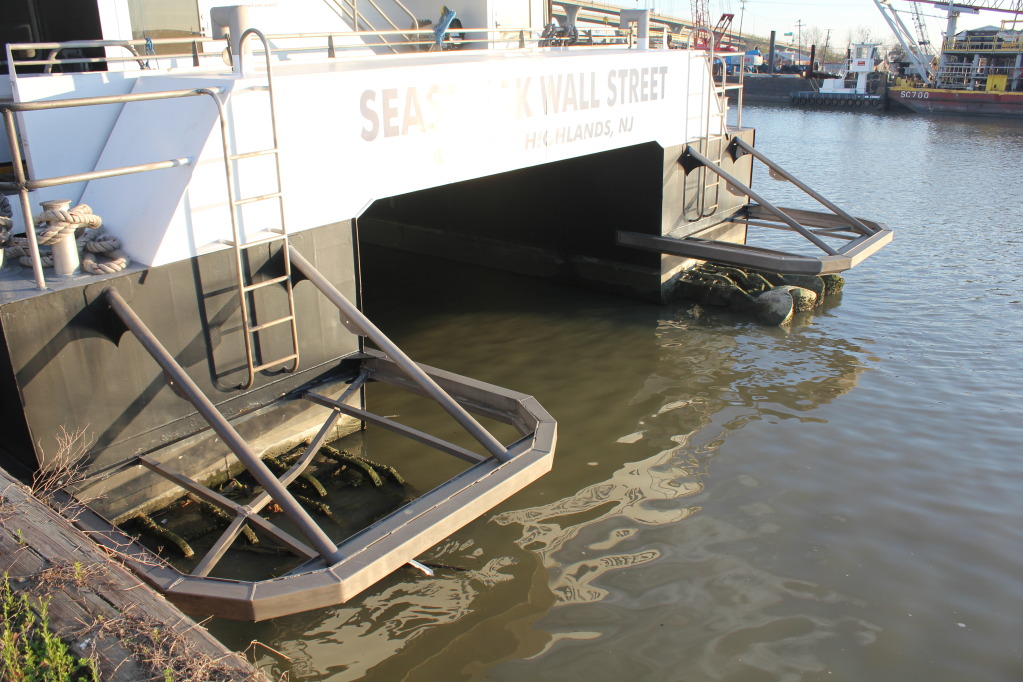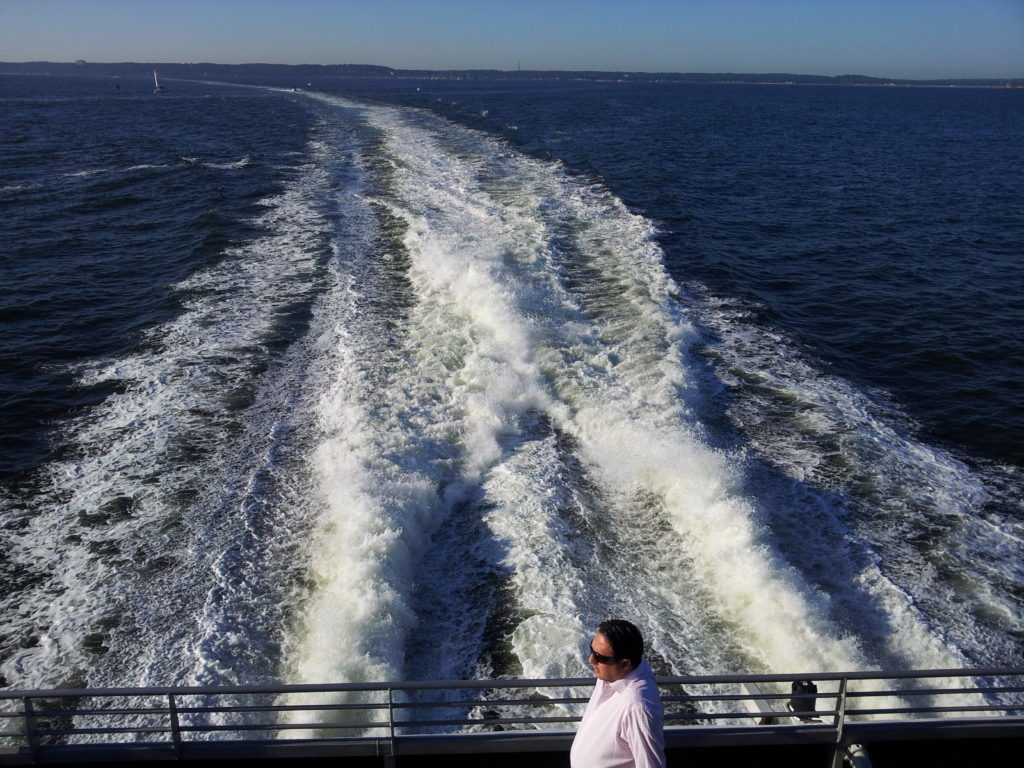
The title of this story has a purpose. On an ironic level, web search engines may regard it as a rare combination of terms (Wall Street and Efficiency). But, actually, it is a story about the maritime industry’s efforts to fight for real efficiencies.
Seastreak is the ferry service between our part of New Jersey and New York City. This ferry service took its first feeble steps in the early eighties and today is an integral part of the quality of life of Monmouth County. M&O has shared many of the adventures and stumbling blocks with the progression of Owners that eventually resulted in the present service (which, by the way, is a true commercial venture and does not rely on subsidies). Once it became apparent that the service was viable in the late 1990’s, Seastreak purchased four new catamaran ferries from Gladding Hearn.

When they entered service in the early 2000’s, these ferries were state of the art with four diesel engines and four water jet drives, and continue to be wonderful riding examples of high speed ferry design.
However, fuel cost is a major driver in ferry operations and keeping the fuel bill to a minimum is the way to keep a ferry operation viable. Central to the cost of fuel for a ferry is the efficiency of water jet drives and the operation of four diesel engines. Jet drives are wonderful devices, but their efficiencies are a complex issue that is limited by inherent physical realities. And two engines are almost always more efficient than four engines of the same horsepower. Chris Bierker, Seastreak’s director of vessel engineering, wanted greater fuel efficiency and about 10 years ago was drawn to the Servogear concept. At first glance there is nothing magical about Servogear, but a closer look shows that its efficiency is related to deep refinement and integration of common propulsion concepts. Servogear uses a beautifully optimized shafting system with a beautifully integrated tunnel and a gorgeous controllable pitch propeller.
Chris started developing estimates and finally, with the support of his employer and assistance of a US government energy efficiency improvement loan, took one of the ferries (which is named Seastreak Wall Street) out of service early this year to change the vessel from a quad engine/water jet vessel to a twin engine twin screw servogear system.
So what was the underlying rationale?
This was the plan:
- Much improved emissions by using the latest emission technologies on the replacement engines An estimated 20% reduction in fuel use. Reduced carbon emissions due to reduced fuel consumption.
But there were also some other goals: reduced maintenance cost, reduced wake (one of my favorites), increased reliability and increased serviceability.
Compared to this, the only (but, in this service, insignificant) downside is an increase in operating draft.

The vessel is now back in service and at this time it looks like all the goals are being met and exceeded. The payback period? That is being sorted out at this stage, but knowing that ferries of this type run for 30 years, it is expected that everybody will continue to reap the benefits for quite a number of years to come.
Today I happened to take the ferry to New York and on the way in I happened to ride the Seatreak Wall Street and on the way home one of the water jet ferries. This is what I saw.


The one on the left is Servogear.
Congratulations Chris; with all the details that need to be covered on a project like this, we know that you moved a mountain to the benefit of us all! We hope to get more updates as the numbers are coming in and we look forward to seeing the sister vessels being upgraded soon too.

